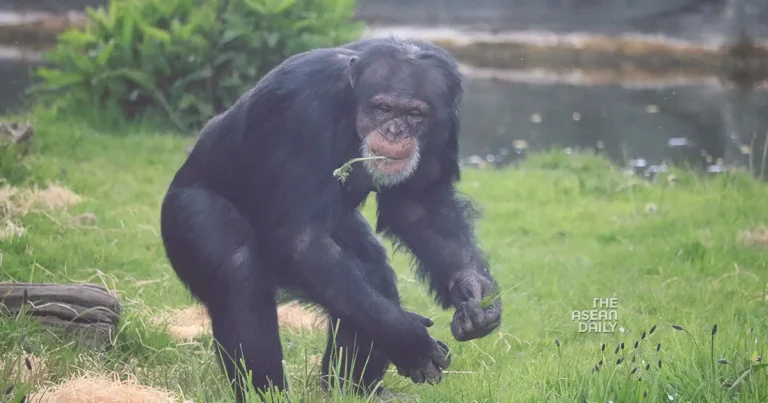3-11-2023 (IVORY COAST) In the borderlands where danger looms, a troop of approximately 30 individuals, engaged in a border patrol, ascends a rocky hill to conduct reconnaissance. When they detect the sounds of potential adversaries uncomfortably nearby, they wisely opt to retreat. There’s no point in risking a confrontation when the odds are stacked against you.
This is a scenario that has played out countless times throughout human history. However, in this particular instance, the actors weren’t people but chimpanzees residing in Tai National Park in southwestern Ivory Coast, which is West Africa’s largest protected rainforest area.
Researchers recently announced that they have observed the tactical use of elevated terrain in situations of conflict while monitoring two neighbouring communities of wild western chimpanzees in Tai National Park for three years.
The study revealed that the information gathered during hilltop reconnaissance influenced whether the chimpanzees would venture into enemy territory. Interestingly, these primates were more inclined to do so when the risk of confrontation was lower. This marks the first documented use of this ancient military strategy by our closest living relatives.
Lead author of the study and University of Cambridge biological anthropologist, Sylvain Lemoine, commented on the findings, “It demonstrates sophisticated cognitive and cooperative skills to anticipate where and when to go, and to act upon gathered information in a safe way.”
According to Lemoine, inter-group violence is a common occurrence among chimpanzees, especially in regions where their territories overlap. He explained, “Chimpanzees compete for space, which includes food resources. Large territories are beneficial as they reduce competition within the group and enhance female reproductive rates.”
The two chimpanzee groups studied had a similar size, ranging from 40 to 45 individuals, including around five to six adult males and 10 to 13 adult females, with the rest being adolescents, juveniles, and infants. It is worth noting that male chimpanzees hold a dominant position over females.
Chimpanzees are known for their territorial nature and regularly engage in border patrols. During these patrols, individuals move along the periphery of their territory in a coordinated and cohesive manner. They often participate in inter-group encounters that can be vocal exchanges from a distance, visual contacts, or physical confrontations involving fights, bites, and chases. Killings are not uncommon, and victims can be of all age groups.
Interestingly, climbing hills doesn’t necessarily improve their ability to visually detect members of a rival community. Instead, the elevated terrain offers better acoustic conditions for hearing adversaries.
“The hilltops are covered in vegetation and don’t provide good vantage points,” Lemoine explained. While on top of these border hills, the chimpanzees typically refrain from making noise while eating or foraging. Instead, they rest and listen.
The study revealed that the chimpanzees were more likely to venture into dangerous territory after descending from a hill if rival chimpanzees were further away. Incursions into risky areas occurred about 40% of the time when rivals were approximately 500 metres away, 50% when they were around one kilometre away, and 60% when they were about three kilometres away.
Chimpanzees, along with bonobos, are the species most genetically similar to humans, sharing approximately 98.8% of our DNA. Researchers estimate that the evolutionary split between humans and chimpanzees occurred around 6.9 to 9 million years ago.
Studying chimpanzee behavior provides valuable insights into our own species. Lemoine concluded, “We can gain a better understanding of our origins and what makes us human. It helps us comprehend the behaviors and adaptations that were present in the last common ancestor between humans and chimpanzees, shedding light on the social behaviors of ancient hominin species. It also emphasizes our commonalities with our closest living relatives, demonstrating that our differences are primarily in degree, not in nature.”




